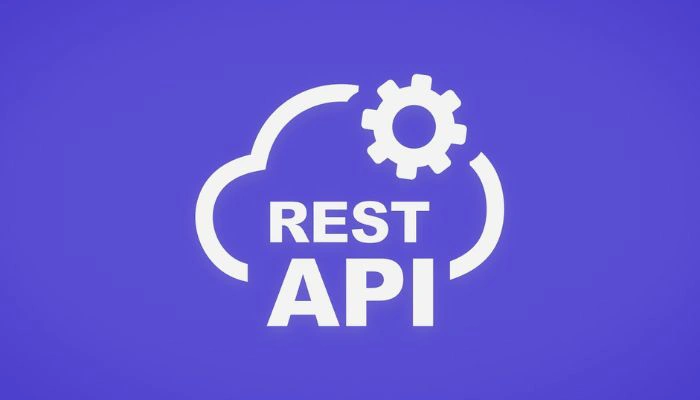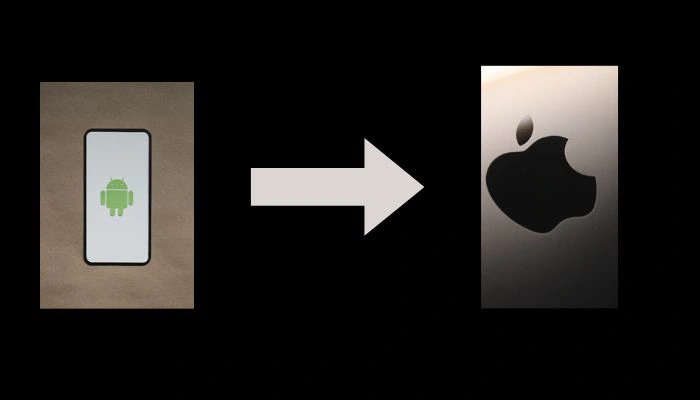A Step by Step Guide to Outsource App Development
The digital landscape is evolving at an unprecedented pace, with mobile applications at the forefront of this transformation. Businesses, both startups and established enterprises, are increasingly recognizing the imperative of having a strong app presence to connect with their audience, streamline operations, and drive growth. However, the journey from a brilliant app idea to a fully functional product can be complex, resource-intensive, and often daunting for companies without in-house development capabilities.
This is where the strategic advantage of outsourcing app development comes into play. By leveraging external expertise, businesses can navigate the intricate world of app creation without the overheads and challenges associated with building and maintaining an in-house team. This article will provide a comprehensive, step-by-step guide to help you understand the entire process of outsourcing app development, from initial concept to successful launch and beyond, ensuring you make informed decisions and achieve your desired outcomes.
Read on to unlock the secrets of successful app development outsourcing, discover how to mitigate common challenges, and learn how to harness the power of a global talent pool to bring your app vision to life efficiently and effectively. Whether you're a budding entrepreneur or a seasoned executive, this guide will equip you with the knowledge to make your next app development project a resounding success.
How to Choose the Right Outsource App Development Partner

Selecting the right partner is arguably the most critical step in the entire outsource app development journey. A thorough vetting process will ensure you find a reliable, skilled, and compatible team.
Research and Shortlist Potential Vendors:
- Utilize online platforms like Clutch, GoodFirms, and Upwork, focusing on companies with strong reviews and relevant portfolios.
- Seek recommendations from your network.
- Attend industry events or webinars to identify reputable firms.
Evaluate Their Expertise and Portfolio:
- Look for companies that have experience developing apps similar to yours in terms of industry, complexity, and features.
- Review their case studies and client testimonials. Ask for direct client references if possible.
- Assess their technical capabilities: Do they have experts in the technologies you need (e.g., Swift/Kotlin for native, React Native/Flutter for cross-platform, specific backend frameworks)?
Assess Communication and Project Management:
- Clear communication is paramount. Evaluate their responsiveness, English proficiency, and willingness to understand your vision.
- Inquire about their project management methodologies (e.g., Agile, Scrum) and the tools they use (e.g., Jira, Trello, Asana).
- Understand how they will keep you updated on progress and handle feedback.
Consider Cultural Compatibility and Time Zone Differences:
- While time zone differences can enable 24/7 development, consider how they might impact real-time communication and meeting schedules.
- Assess cultural compatibility. A shared understanding of work ethics and expectations can foster smoother collaboration.
Discuss Pricing Models and Contractual Terms:
- Understand their pricing structure: Fixed-price, Time & Material, or Dedicated Team.
- Scrutinize the contract for clauses related to intellectual property ownership, confidentiality (NDA), maintenance, support, and dispute resolution. Ensure everything is clearly defined to avoid future misunderstandings.
=> Outsource App Development Services Today!
Understanding the Benefits of Outsource App Development
Outsource app development offers a compelling array of advantages that make it an attractive option for businesses of all sizes. Far from being a mere cost-saving measure, strategic outsourcing can significantly enhance efficiency, accelerate time-to-market, and provide access to specialized skills that might otherwise be out of reach.

One of the most significant benefits is cost efficiency. Building an in-house development team involves substantial expenses, including salaries, benefits, office space, hardware, software licenses, and ongoing training. When you outsource, you often gain access to highly skilled developers in regions with lower labor costs, dramatically reducing your overall expenditure without compromising quality. This allows you to allocate more resources to other critical business areas like marketing or product innovation.
Beyond cost, outsourcing provides unparalleled access to a global talent pool. The best developers for your specific project might not be located in your immediate vicinity. Outsourcing opens up a world of expertise, allowing you to handpick specialists with niche skills in areas like AI, blockchain, IoT, or specific programming languages, ensuring your app is built with cutting-edge technology and robust architecture. This agility in talent acquisition means you're not limited by geographical boundaries or local skill shortages.
Furthermore, outsourcing can lead to faster project completion and time-to-market. Dedicated outsourcing teams often have streamlined processes, established workflows, and a wealth of experience from working on diverse projects. This can lead to quicker development cycles and a more efficient rollout of your application. Many outsourcing partners also operate across different time zones, enabling a near 24/7 development cycle, further accelerating progress.
Finally, outsourcing allows your internal teams to focus on core business activities. If app development isn't your primary business function, managing an in-house team can divert valuable resources and attention away from your strategic priorities. By outsourcing, you can delegate the technical execution to experts, freeing up your internal staff to concentrate on what they do best – whether that's sales, marketing, customer support, or product strategy.
Identifying Your App Requirements and Goals

Before you even begin to consider potential outsourcing partners, a clear and comprehensive understanding of your app's requirements and goals is paramount. This foundational step will dictate every subsequent decision, from selecting the right team to defining project scope and budget.
1. Define Your App's Core Purpose and Value Proposition
- What problem will your app solve for users?
- What unique value will it provide?
- Who is your target audience, and what are their needs?
- What are your long-term business objectives for this app (e.g., revenue generation, customer engagement, operational efficiency)?
2. Outline Key Features and Functionality:
- Create a detailed list of all essential features. Categorize them as "must-have" (for a Minimum Viable Product - MVP), "nice-to-have," and "future enhancements."
- Consider user flows and how users will interact with the app.
- Think about integrations with other systems (e.g., payment gateways, social media APIs, CRM).
3. Determine Your Target Platforms and Technology Stack:
- Will your app be for iOS, Android, both (cross-platform), or a web application?
- Do you have any preferred programming languages or frameworks? While your outsourcing partner will advise, having an initial thought can be helpful.
4. Establish a Realistic Budget and Timeline:
- Research industry benchmarks for app development costs (which we'll cover later).
- Define a clear timeline for the MVP and subsequent phases. Be realistic about the complexity and resources required.
- Account for potential contingencies and buffer time.
5. Prepare a Detailed Project Specification Document (or RFP)
This document is crucial for communicating your vision clearly to potential vendors. It should include:
- Project overview and objectives.
- Target audience analysis.
- Detailed feature list with descriptions.
- Wireframes or mockups (even rough sketches can be valuable).
- Technical requirements (if known).
- Desired timeline and budget range.
- Key performance indicators (KPIs) for success.
Cost Considerations for Outsource App Development
Understanding the financial landscape of outsource app development is crucial for effective budgeting and project planning. While outsourcing often presents a cost-effective alternative to in-house development, the total cost can vary significantly based on several key factors.
Here's a breakdown of the typical cost ranges for outsourced app development, keeping in mind that these are general estimates and actual costs will depend on specific project details:
| App Complexity Level | Estimated Cost Range (USD) | Typical Development Time | Key Characteristics |
| Simple Apps | $6,000 - $45,000 | 4-8 weeks | Basic functionality, minimal backend integration, simple UI/UX, e.g., calculator, basic to-do list, informational app. |
| Medium Apps | $55,000 - $110,000 | 8-16 weeks | Moderate complexity, includes user accounts, social media integration, API integrations, some custom features, e.g., basic e-commerce app, simple social media app, food delivery app with limited features. |
| Complex Apps | $110,000 - $260,000+ | 16+ weeks | High complexity, advanced features (AI, machine learning, real-time data), complex backend, multiple integrations, robust security, e.g., on-demand service app, large social networking platform, enterprise-level solutions, video streaming. |
Factors Influencing the Cost
The cost of ousourcing app develeopment for your business can be influenced by the following considerations:
1. App Complexity and Features: The more features and intricate functionalities you require, the higher the development cost. Each additional integration, custom module, or advanced technology adds to the development time and effort.
2. Platform (iOS, Android, Cross-Platform): Developing for both iOS and Android (native) will typically cost more than a single platform. Cross-platform frameworks (like React Native or Flutter) can reduce costs by allowing a single codebase for multiple platforms, but may have limitations for highly complex or performance-intensive apps.
3. UI/UX Design Complexity: A highly customized, visually rich, and intricate user interface and user experience design will naturally require more design effort and thus, higher costs.
4. Location of the Outsourcing Team: Developer rates vary significantly across different geographical regions. Countries in Eastern Europe, Asia, and Latin America often offer more competitive rates compared to North America or Western Europe.
5. Team Size and Expertise: The number of developers, designers, QA engineers, and project managers required for your project, along with their level of experience and specialized skills, will directly impact the overall cost.
6. Post-Launch Support and Maintenance: Don't forget to factor in ongoing costs for bug fixes, updates, security patches, and potential future feature enhancements. A reliable outsourcing partner will offer a support and maintenance package.
7. Hidden Costs to Watch Out For:
- Third-party API integrations: Costs associated with licensing or using external services.
- Premium features/libraries: If your app requires specific paid components.
- App store developer fees: Annual fees for publishing on Apple App Store and Google Play Store.
- Marketing and promotion: Crucial for app discovery, these costs are separate from development.
- Scalability requirements: Building an app that can handle significant user growth from the outset might increase initial development costs but save money in the long run.
By carefully considering these factors and engaging in detailed discussions with potential outsourcing partners, you can arrive at a realistic budget that aligns with your app development aspirations.
Managing Risks and Ensuring Quality in Outsource App Development
While the benefits of outsource app development are numerous, it's crucial to acknowledge and proactively manage potential risks to ensure a high-quality outcome. Addressing these challenges head-on will safeguard your investment and the success of your project.

Communication Gaps: As highlighted earlier, poor communication can derail a project. Mitigate this by establishing clear channels, regular meetings, and a culture of open feedback. Consider using a dedicated project manager on your side to liaise with the outsourcing team.
Quality Control Concerns: To ensure the final product meets your standards, emphasize quality assurance throughout the development lifecycle.
- Implement rigorous testing protocols: This includes functional, performance, security, and usability testing.
- Demand regular demos: See working software frequently to identify issues early.
- Conduct User Acceptance Testing (UAT): Involve your internal stakeholders and target users in testing the app before launch to ensure it meets business needs and user expectations.
- Request code reviews: Ensure the outsourcing partner has processes in place for internal code reviews to maintain code quality.
Intellectual Property (IP) Protection: Protecting your app idea and code is paramount.
- Sign a comprehensive Non-Disclosure Agreement (NDA): This should be in place before sharing any sensitive information.
- Include strong IP clauses in the contract: Clearly define that all code, designs, and other deliverables created during the project will be solely owned by your company upon payment.
- Research the vendor's reputation: Look for companies with a proven track record of ethical practices and data security.
Scope Creep: Uncontrolled changes to the project scope can lead to budget overruns and delays.
- Define a clear scope of work from the outset.
- Implement a formal change management process: Any new feature requests or modifications should go through a documented approval process, with revised timelines and costs agreed upon.
Vendor Dependence: While outsourcing offers expertise, becoming overly reliant on a single vendor can be risky.
- Ensure thorough documentation: Request comprehensive documentation of the code, architecture, and deployment processes.
- Consider a phased approach: Break down large projects into smaller, manageable phases to evaluate the vendor's performance before committing to the entire project.
- Plan for knowledge transfer: Ensure a smooth handover of knowledge and assets at the project's conclusion.
By systematically addressing these potential pitfalls, you can significantly increase the likelihood of a successful and rewarding outsource app development experience.
Conclusion
Embarking on an app development journey is a significant undertaking, but with a well-structured approach and the right partner, it can yield immense rewards. Choosing to outsource app development empowers businesses to tap into a world of specialized talent, optimize costs, and accelerate their path to market, all while maintaining focus on their core competencies. From meticulously defining your app's purpose and features to rigorously vetting potential partners and ensuring seamless communication, each step in this guide is designed to set your project up for success. By understanding the process, embracing proactive risk management, and fostering a collaborative relationship with your chosen team, you can transform your innovative app concept into a tangible, high-performing reality that resonates with your target audience and drives business growth.
Ready to bring your innovative app idea to life with expert outsource app development? Contact us today for a consultation and discover how we can help you build your next successful mobile application!









